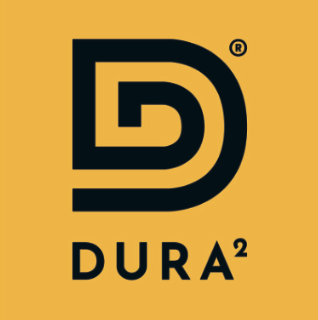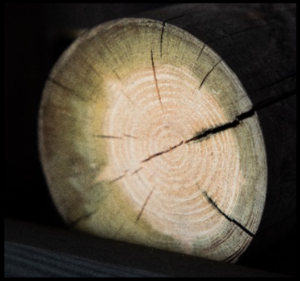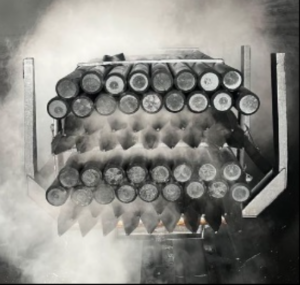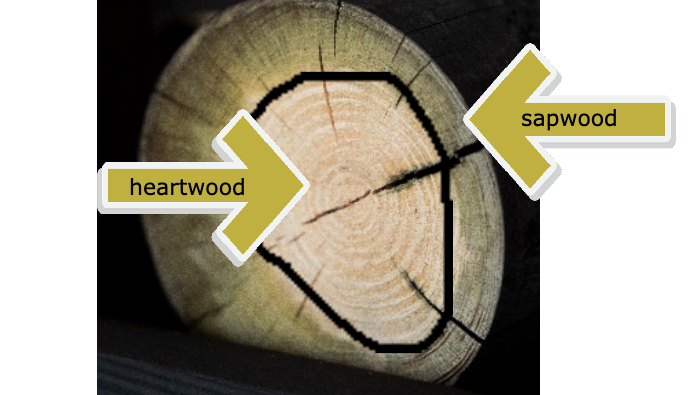FAQ
DURA2= unique
What makes DURA² special?
A 10-year lifespan is sufficient for most applications, but what if a safe, long-lasting treatment is required? That’s where DURA² comes in, providing a combination of two traditional methods, without their disadvantages.
DURA² is also patented, which means our process will remain unique.
DURA²: 2x treatment, 2x drying, 2x expected lifetime
Traditionally, timber is dried before impregnation and treated only once. For DURA², we do everything twice.
After the dried timber is treated to saturation a first time with water-based products containing salts, it’s dried a second time, in order to get more and deeper cracks.
Then the timber is treated to saturation a second time with a salt solution in the high-pressure tank, to which the dark brown colorant is added.
DURA² has a double advantage: the second treatment not only provides a deeper protection, it also ensures the timber is protected right down to the cracks that appear after drying between treatments. This achieves virtually the same effect as with creosoted treatment, but using a different process. Whereas the mobile nature of creosote ensures that the deep protection comes during cracking after placement, DURA² is a preventive protection that reaches even the deepest cracks.
Due to the immobile nature of the water-based product, the DURA² treatment ensures the product is fixed within the timber.
DURA²: the product reaches the deepest cracks.
Expected lifespan: 20 to 25 years.
More information about the different treatments and the process.
Omdat we je hout twee keer behandelen: een eerste keer met een zoutoplossing met een maximale zoutconcentratie, en na een lange droogperiode, impregneren we het een tweede keer. Hierdoor dringt de zoutoplossing niet alleen het spintgedeelte twee keer binnen, maar kan het ook via de barsten in het kerngedeelte binnendringen. Die barsten verschijnen spontaan door droging. Daarom laten we je hout na de eerste behandeling volledig drogen zodat al het water eruit verdampt (het zout blijft in het hout), voordat het een tweede keer met de oplossing met maximale zoutconcentratie en het kleurmiddel onder druk wordt geïmpregneerd.
Why does my DURA² timber have a label?
The label not only adds a uniquely elegant look to your timber and makes it stand out from other timber products, it is also linked to our 20 year guarantee. The plaque itself represents the DURA² premium quality and the year of production ensures easy traceability.
What are the different possible treatments?
PROCESS
Each impregnation treatment is performed according to the following process:
1. Dry the fresh timber
so some cracks already appear spontaneously, and so that as much water as possible can evaporate from the pores.
This allows more impregnating agent to be absorbed than with fresh timer. .
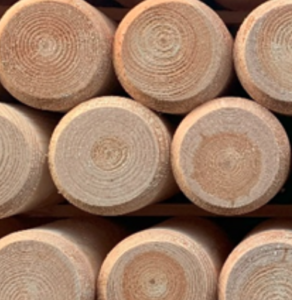
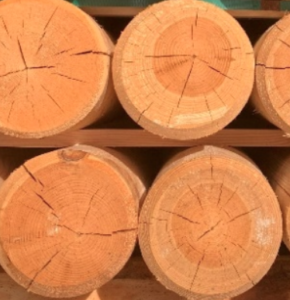
2. Impregnate the dried timber to saturation in a high-pressure tank.
See process.
TREATMENTS
There are different types of treatments, depending on the process and the product used to impregnate.
A. Traditional treatment, which was always applied until 2019 (when DURA² was developed). This treatment is done with 2 types of products:
Type 1: treatment with oil-based products, such as creosote
Since oil-based products are mobile, they move deeper into the timber after installation, into the cracks that form spontaneously. In this way, even the part that was first unprotected (= the part where there is no impregnating agent yet that has been created by spontaneous cracks that occur after installing the timber), is also protected.
In other words, the great advantage of this product type is the migration of the product, that ensures the extremely long lifespan of the treated timber.
The disadvantages, however, are the health risks and risk of burns.
Expected lifespan: 25 to 30 years.
Type 2: treatment with water-based products containing salts – Tanalith Treatment
Advantages: While oil-based treatments can be harmful to health, treatment with water-based salt-containing products is harmless to humans and animals.
This type of timber is often called “green” or “wolmanized” timber, but the end product is also available in light or dark brown colours.
The disadvantage of these water-based products is that they are not mobile, meaning the product remains in the outer layers of the timber, and cannot move to the cracks that spontaneously form over time. This allows sap, moisture, and insects to enter deeper into the timber through those cracks, into the unprotected parts and this is where the rotting process begins.
Therefore, this treatment offers a much shorter timber lifespan.
Expected lifespan: 10 years.
A 10-year lifespan is sufficient for most applications, but what if a safe, long-lasting treatment is required? That’s where DURA² comes in, providing a combination of two traditional methods, without their disadvantages.
DURA² is also patented, which means our process will remain unique.
B. DURA²: 2x treatment, 2x drying, 2x expected lifetime
Traditionally, timber is dried before impregnation and treated only once. For DURA², we do everything twice.
After the dried timber is treated to saturation a first time with water-based products containing salts, it’s dried a second time, in order to get more and deeper cracks.
Then the timber is treated to saturation a second time with a salt solution in the high-pressure tank, to which the dark brown colorant is added.
DURA² has a double advantage: the second treatment not only provides a deeper protection, it also ensures the timber is protected right down to the cracks that appear after drying between treatments. This achieves virtually the same effect as with creosoted treatment, but using a different process. Whereas the mobile nature of creosote ensures that the deep protection comes during cracking after placement, DURA² is a preventive protection that reaches even the deepest cracks.
Due to the immobile nature of the water-based product, the DURA² treatment ensures the product is fixed within the timber.
DURA²: the product reaches the deepest cracks
Expected lifespan: 20 to 25 years.
Is DURA² treated timber safer than creosoted timber?
Yes! DURA² timber is as safe as traditional (green) impregnated wood but thanks to the double treatment, the product also reaches the cracks before it is installed and remains protected almost as well as creosoted timber.
Does DURA² timber turn grey (with lighter and darker patches)?
DURA² timber ages naturally, in a nice homogeneous way. Creosoted timber tends to become patchy in colour, but DURA² retains its beautiful dark brown color for a long time and ages evenly after several years.
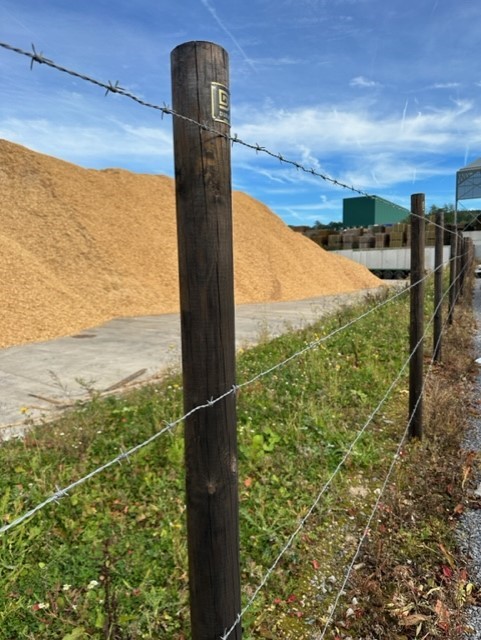
An added benefit of creosoted timber was that horses didn’t nibble the fencing. Does the same apply to DURA²?
This was indeed an advantage of creosoted fencing. Of course, it seems quite obvious why they didn’t nibble it.
DURA² timber does not have an unpleasant odour and is safe for humans and animals, so some horses do nibble the wood. Note that this generally occurs in horses that are bored, that are on a small pasture area and have little room to run around. A generous pasture is therefore recommended, and of course an electric fence wire is always an option.
Treatment-process
What are the different possible treatments?
A 10-year lifespan is sufficient for most applications, but what if a safe, long-lasting treatment is required? That’s where DURA² comes in, providing a combination of two traditional methods, without their disadvantages.
DURA² is also patented, which means our process will remain unique.
DURA²: 2x treatment, 2x drying, 2x expected lifetime
Traditionally, timber is dried before impregnation and treated only once. For DURA², we do everything twice.
After the dried timber is treated to saturation a first time with water-based products containing salts, it’s dried a second time, in order to get more and deeper cracks.
Then the timber is treated to saturation a second time with a salt solution in the high-pressure tank, to which the dark brown colorant is added.
DURA² has a double advantage: the second treatment not only provides a deeper protection, it also ensures the timber is protected right down to the cracks that appear after drying between treatments. This achieves virtually the same effect as with creosoted treatment, but using a different process. Whereas the mobile nature of creosote ensures that the deep protection comes during cracking after placement, DURA² is a preventive protection that reaches even the deepest cracks.
Due to the immobile nature of the water-based product, the DURA² treatment ensures the product is fixed within the timber.
DURA²: the product reaches the deepest cracks.
Expected lifespan: 20 to 25 years.
How does a high-pressure tank work?
Timber treated in a high-pressure tank can be compared to a sponge. Similar to how a sponge can be saturated with water, wet timber is also saturated, and nothing can be added to it. Therefore wet timber must first be dried to allow the pores to absorb the treatment agent. After the timber has dried, the air in the pores should be replaced with impregnating agent.
In a sealed high-pressure tank, powerful vacuum pumps extract as much air as possible from the tank and the timber. The stronger the vacuum, the more preservative solution can be absorbed.
While maintaining the vacuum, the tank is completely filled with impregnating agent.
Next, pressure pumps force the impregnating agent deep into the timber under extremely high pressure. Once sufficient fluid has penetrated into the timber, the excess fluid is pumped back out into a storage tank.
A final vacuum is then created to prevent leakage of the impregnating agent as much as possible.
Why not impregnate once, with a double dose of salts?
To impregnate the timber, the salt is dissolved in water. However, only a limited concentration of salt can be dissolved. Therefore we impregnate the timber a first time with a maximum concentration of salt, and let it dry completely afterwards so that all the water evaporates and the salt remains in the timber.
Next, we impregnate the already protected timber a second time using this solution with maximum salt concentration, allowing the salt solution not only to re-enter and protect the sapwood, but also to provide an additional protection in the cracks that have appeared due to drying. The impregnability of the sapwood varies depending on the type of wood and the moisture within the wood. By anticipating this, we can maximize protection for any type of wood.
Because of this double treatment, with a complete drying process before and between both treatments (made possible due to our large stock) we are able to guarantee the unique DURA² quality.
Why is the brown colorant only added in the second treatment stage?
Even though the difference in penetration degree between treatment with salts only versus treatment with salts plus additional colorant is not significant, the more viscous colorant reduces the penetration degree of the salt solution. So to obtain an optimal result, we only add the colorant, which gives the timber its beautiful chestnut brown colour, during the second treatment. Additionally, the brown colour stays more on the surface and will weather to a natural grey colour over time.
How can I keep track of my timber?
Throughout the entire process of double impregnation and drying, your timber is marked with a unique code that allows us to track your timber in every step of the process.
Is DURA² treated timber safer than creosoted timber?
Yes! DURA² timber is as safe as traditional (green) impregnated wood but thanks to the double treatment, the product also reaches the cracks before it is installed and remains protected almost as well as creosoted timber.
Does DURA² timber last as long as creosoted timber?
The lifespan is similar. We believe so strongly in our product and treatment, that we offer a warranty of up to 25 years. After all, we are convinced that our unique patented process is the best protection for timber.
Can I buy a product to touch up / treat cut edges etc.?
Yes, you can! EndSeal Black, specially developed for DURA²®, protects the holes and cut ends in your DURA² timber and maintains the guarantee!
Find out more here.
An added benefit of creosoted timber was that horses didn’t nibble the fencing. Does the same apply to DURA²?
This was indeed an advantage of creosoted fencing. Of course, it seems quite obvious why they didn’t nibble it.
DURA² timber does not have an unpleasant odour and is safe for humans and animals, so some horses do nibble the wood. Note that this generally occurs in horses that are bored, that are on a small pasture area and have little room to run around. A generous pasture is therefore recommended, and of course an electric fence wire is always an option.
Creosote
Why Choose DURA² as an alternative to creosoted timber, even if creosoted timber is not (yet) banned in the UK, as it has been in Europe since April 30, 2023?
- DURA² matches the quality of creosoted timber. Not only is it the best alternative in terms of longevity, but it also has the same chestnut brown colour.
- This allows you to replace creosoted posts that are in need of replacement without a noticeable colour difference or having to buy a whole new fence.
- DURA² is a safe and durable solution for any application requiring a long lifespan.
- DURA² is safe, which means no more risk of burns to the installer and no more health risks to humans and animals.
What is creosote?
If you’ve ever had a creosote-treated fence installed, you may remember the pungent odour, reminiscent of new asphalt road surfaces.
Like asphalt, creosote is also a product that is obtained from coal tar.
Creosote is an oily product composed of approximately 400 organic molecules.
Before 2019, it was only allowed to be used to treat timber for agricultural applications, utility poles and railway sleepers.
Creosote is a highly efficient, but also very aggressive product. Since May 2023, it has therefore been banned in the entire EU for the treatment of timber intended for agricultural purposes.
It is now only allowed for the treatment of utility poles and railway sleepers.
Why was creosote banned?
In 2019, France suddenly banned creosoted timber in the agricultural sector due to health risks. Inhaling the fumes that are released during the creosote manufacturing process is carcinogenic, and placing creosoted fences in the sun commonly causes burns and eye irritation.
Because of these risks, the use of creosote had been restricted even before it was prohibited. Creosoted applications were banned anywhere human contact was possible, such as playground equipment or garden fencing, or timber used in public places.
From April 30, 2023, all European countries followed the French example and the production and sale of creosoted timber for use in fencing was also banned in the rest of Europe.
Was there an alternative to creosoted timber before 2019?
Before creosote was banned, end users had the option of a standard treatment with a water-based substance and copper sulfate (tanalised), the so-called “green timber”, which is impregnated once. While also being a good quality product (provided the treatment is done properly), and above all, very safe, the lifespan of this “green timber” is only 10 years.
End users therefore had to choose between normal impregnated wood with a lifespan of about 10 years, or creosoted timber that did offer a long lifespan, but posed the above mentioned health risks.
What has been the alternative to creosoted timber since 2019?
Customers can still choose to install safe green² fencing with the lifespan of about 10 years. It is a good quality product (provided the treatment is done properly), and “green” or “tanalised” timber remains a good alternative for applications that don’t require longevity.
Since the sudden ban on creosoted timber in France, CIBB/Palenbedrijf Lenaers has developed a new treatment based on the same salts as the “green” posts. Therefore, it’s a safe treatment – and thanks to the new patented DURA² process, it offers double the lifespan! By performing the double treatment with a controlled drying process, we can match the life span of creosoted timber.
Why was creosoted timber sold for so long, even when it was not safe?
Creosoted timber offers a great advantage, being very protective against mold, insects and rot.
Creosoted timber is impregnated with an oil-based product, which is mobile. This means it can move further into the cracks created during the first years of life after placement. This keeps the timber protected for a very long time, up to 30 years.
Is DURA² treated timber safer than creosoted timber?
Yes! DURA² timber is as safe as traditional (green) impregnated wood but thanks to the double treatment, the product also reaches the cracks before it is installed and remains protected almost as well as creosoted timber.
I still have creosoted posts. What should I do?
This is not a problem, unless you are a merchant or reseller. Creosoted timber is banned for sale.
The end user is still allowed to have them. So if you have a creosoted fence, you can keep it, with the advantage that once the post reaches the end of its lifespan, it can be easily replaced with a DURA² post.
Does DURA² timber turn grey (with lighter and darker patches)?
DURA² timber ages naturally, in a nice homogeneous way. Creosoted timber tends to become patchy in colour, but DURA² retains its beautiful dark brown color for a long time and ages evenly after several years.
An added benefit of creosoted timber was that horses didn’t nibble the fencing. Does the same apply to DURA²?
This was indeed an advantage of creosoted fencing. Of course, it seems quite obvious why they didn’t nibble it.
DURA² timber does not have an unpleasant odour and is safe for humans and animals, so some horses do nibble the wood. Note that this generally occurs in horses that are bored, that are on a small pasture area and have little room to run around. A generous pasture is therefore recommended, and of course an electric fence wire is always an option.
April 30, 2023: the end of creosoted wood
As of April 30, 2023, creosote poles for orchards will no longer be sold. On October 14, a European decision was published in which creosote, among other things, is classified as a carcinogenic substance.
More info at https://www.nfofruit.nl/nieuws/einde-verkoop-creosootpalen-in-zicht/
Article: “Limiting the use of creosote as a wood preservative”
Bron: https://echa.europa.eu
The use of creosote as an active substance in the EU is only allowed as wood preservative for two uses: utility poles for electricity and telecommunications, and for railway sleepers. The European Commission took this decision in October 2022, based on the opinion of ECHA’s Biocidal Products Committee (BPC) on the renewal application for this active substance.
Creosote is a mixture containing hundreds of distinct substances, including bi- and polycyclic aromatic hydrocarbons (PAHs), phenols and heterocyclic oxygen-, sulphur- and nitrogen-containing substances. Many of the substances in creosote are harmful to our health or the environment.
Under the Classification, Labelling and Packaging (CLP) Regulation, creosote is classified as a carcinogen in category 1B – meaning that it may cause cancer. It also meets the criteria for being a persistent, bioaccumulative and toxic (PBT) and a very persistent and very bioaccumulative (vPvB) substance. Due to these concerns, creosote meets the exclusion criteria under the Biocidal Products Regulation (BPR). It means that its use is not allowed on the EU market without a specific derogation. As there are currently no suitable alternatives available in certain Member States, the Commission granted the renewal for a maximum of seven years for these two specific uses of creosote.
EU countries can decide if they allow creosote-treated wood to be placed on the market for the two derogated uses and may authorise such products accordingly. On 31 January 2023, the Agency published a list of those Member States where creosote-treated railway sleepers and utility poles may still be placed on the market. The information available on this list came directly from the Member States. From 30 April 2023 onwards, placing these railway sleepers and utility poles on the market is only allowed in Member States listed on ECHA’s website.
Creosote and creosote-related substances are also restricted under the REACH Regulation (entry 31 of Annex XVII). In October 2022, France submitted a new restriction proposal to amend this restriction. This new proposal aims to reduce health and environmental risks associated with the reuse and secondary uses of wood treated with creosote. It is considered necessary as the current restriction is interpreted or applied differently across EU Member States, indicating that the existing regulatory management measures may not be sufficient to control the risks. In addition, the existing restriction is not aligned with the new provisions under the BPR. The BPR also does not cover any supplies of the treated wood after the first placing on the market in any Member State.
Environment
Why is DURA² more environmentally friendly than other preservatives?
- DURA² is a sustainable solution, because our unique double treatment ensures your DURA² timber will remain in good condition for up to 25 years. Because of this longer lifespan, the timber requires fewer replacements and fewer trees need to be felled than with untreated timber, or timber treated less thoroughly.
- Unlike creosote, DURA² is produced using a water-based product.
- And unlike the production of concrete and plastic, timber grows naturally and doesn’t involve carbon emission.
- Compared to tropical hardwood, the timber we use is sourced from neighbouring countries, so it is sustainable in terms of transportation and carbon emissions.
- Our elegant labels are produced in the Netherlands and don’t have to be shipped halfway around the world.
- Treated timber is dried in open air, so we don’t need drying chambers.
- From start to end, our timber is stored and processed at the same location in Belgium. Once more, this involves no environmentally polluting transport.
- Because the timber remains on site for the entire process, this not only reduces the environmental impact, it also minimizes the risk of error, accidents and damage.
I still have creosoted posts. What should I do?
This is not a problem, unless you are a merchant or reseller. Creosoted timber is banned for sale.
The end user is still allowed to have them. So if you have a creosoted fence, you can keep it, with the advantage that once the post reaches the end of its lifespan, it can be easily replaced with a DURA² post.
Label
Why does my DURA² timber have a label?
The label not only adds a uniquely elegant look to your timber and makes it stand out from other timber products, it is also linked to our 20 year guarantee. The plaque itself represents the DURA² premium quality and the year of production ensures easy traceability.
Wood
What is the difference between heartwood and sapwood? And why is the heartwood not impregnated?
Sapwood is the younger, outermost wood between the heartwood and the bark of the tree. The sapwood provides the upward flow of sap and serves as a storage space for nutrients. Sapwood is much softer and contains saps and therefore, when exposed to weather conditions, it rots if not treated.
Heartwood or duramen is the inner part of the wood, consisting of the oldest growth rings that were formed which no longer contain living cells. The heartwood is hard, compact, dense, dry and durable wood, and often darker in colour than the sapwood. This part of the wood (the core) is far too compact and is impervious to any treatment agent, and this is the case with any type of wood*. The core of the wood can only be impregnated to a penetration depth of 1 mm.
Therefore, we need to impregnate the sapwood (the growth rings around the core) as much as possible to keep the heartwood protected. A crack that doesn’t contain protective agent can cause moisture and insects to seep into the core and cause the wood to rot from there.
A process of controlled drying over several months before the second impregnation ensures not only the remaining water from the first treatment is evaporated (the salt remains in the wood), but also provokes deeper cracks to the core, allowing the salt solution to not only penetrate the sapwood twice, but also go into the heartwood through newly formed cracks.
*Depending on the type of wood, the sapwood part
– is larger or smaller
– is fully or partly impregnated.
For DURA², we only use pine wood species
– that have a large sapwood part
– of which the sapwood part can be fully treated.
EndSeal Black DURA²
Can I buy a product to touch up / treat cut edges etc.?
Yes, you can! EndSeal Black, specially developed for DURA²®, protects the holes and cut ends in your DURA² timber and maintains the guarantee!
Find out more here.
